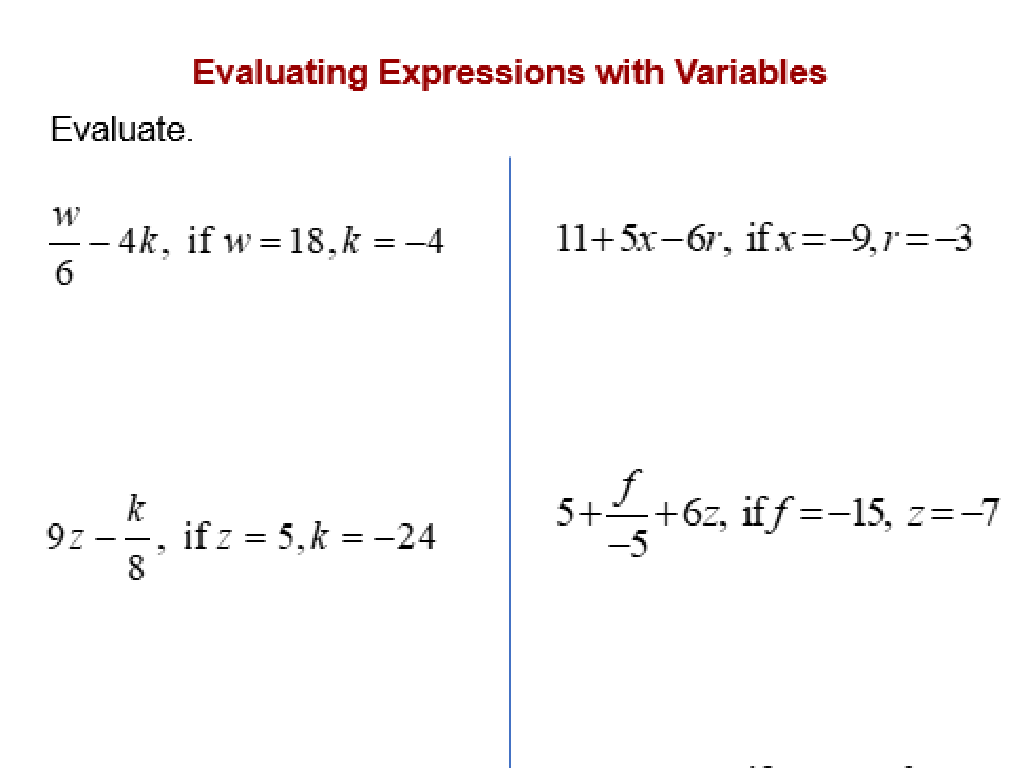Multiply By 8
Subject: Math
Grade: Third grade
Topic: Multiplication Skill Builders
Please LOG IN to download the presentation. Access is available to registered users only.
View More Content
Today’s Adventure: Multiply by 8!
– Multiplication as repeated addition
– Multiplication is adding the same number over and over.
– Everyday uses of multiplication
– Use it for quick calculations, like buying 8 packs of stickers.
– Practice multiplying by 8
– Try 8×1, 8×2, … to 8×10 and see the numbers grow!
– Discover patterns with 8
– Notice any patterns? Like 8, 16, 24… always ends in 8 or 6.
|
This slide introduces the concept of multiplication by 8, framing it as an exciting adventure. Begin by explaining multiplication as a form of repeated addition, which is a foundational skill for third graders. Emphasize the practicality of multiplication in everyday scenarios, such as calculating total costs or understanding time. Engage students with hands-on practice, encouraging them to multiply by 8 using examples they can relate to. Highlight the patterns that emerge when multiplying by 8, which can make memorization easier and more fun. The goal is to build confidence and demonstrate the usefulness of multiplication in daily life.
Warm-Up: Multiplication Review
– Recall multiplication basics
– Review multiplying by 1, 2, 5
– Multiplying any number by 1 gives the same number, by 2 doubles it, and by 5 is like adding the number 5 times.
– Share real-life multiplication
– Did you see examples at the grocery store or at home? Maybe counting snacks or toys?
– Discuss importance of multiplying by 8
– Understanding how to multiply by 8 sets the foundation for more complex math skills.
|
Begin the class with a brief recap of multiplication to ensure that students are comfortable with the concept. Review the simplest multiplication facts by 1, 2, and 5, as these are usually the first ones learned and provide a good foundation. Encourage students to share any real-life examples where they have encountered multiplication during the week to make the concept more relatable. Emphasize the importance of being able to multiply by 8 as it is a skill that will be used frequently in higher-level math. This discussion will prepare them for the day’s lesson focused on multiplying by 8.
The Magic Number 8: Patterns in Multiplication
– Multiplying by 8 and patterns
– Observe what happens when we multiply numbers by 8
– Doubling three times equals x8
– 2 doubled is 4, 4 doubled is 8, and 8 doubled is 16, which is 2×8
– Examples: 1×8, 2×8, 3×8
– 1×8=8, 2×8=16, 3×8=24. Notice any patterns?
– Practice with more examples
|
This slide introduces students to the concept of multiplication by 8, emphasizing the pattern that emerges when doubling a number three times. Start by explaining that multiplication is a faster way of adding the same number multiple times. Show that multiplying by 8 is like doubling a number, then doubling the result, and doubling one more time. Use simple examples like 1×8, 2×8, and 3×8 to illustrate this pattern. Encourage students to find the pattern and use it to quickly multiply other numbers by 8. Provide additional examples for students to practice and solidify their understanding of the concept.
Visualizing Multiplication by 8
– Understanding 8 groups with arrays
– Arrays show a set of numbers as rows and columns, like seats in a theater.
– Visual example: Multiplying 4 by 8
– Imagine 4 groups of 8 objects; how many objects are there in total?
– Group activity: Build your own 8’s array
– Use items like blocks or counters to make arrays of 8.
|
This slide is designed to help students visualize the concept of multiplication by using arrays to represent 8 groups. Start by explaining what an array is and how it can be used to simplify multiplication. Show a visual example of 4×8 using objects grouped in eights to solidify the concept. For the group activity, provide students with classroom materials such as blocks, counters, or drawings to create their own arrays with 8 items in each row. This hands-on activity will help them understand multiplication by 8 in a tangible way. Encourage students to count the total number of items in their arrays to verify their multiplication. The goal is for students to see the practical application of multiplication and to become comfortable with the concept of grouping in eights.
Let’s Practice Together: Multiply by 8
– Interactive multiplication practice
– Solve: 5×8, 6×8, 7×8 on the board
– What do you get when you multiply 5, 6, or 7 by 8?
– Pair up for practice
– Work with a partner to solve more 8 times tables
– Share answers with the class
– Discuss how you got your answers
|
This slide is designed for an interactive class activity focused on multiplying by 8. Begin with guided practice, solving 5×8, 6×8, and 7×8 on the board with the whole class. Then, have students pair up to practice multiplying other numbers by 8, encouraging them to use strategies they’ve learned. Afterward, bring the class together to share their answers and methods. For the teacher: Prepare a list of multiplication problems involving 8 for the pair work. Monitor the pairs to ensure all students are engaged and assist any students who are struggling. Consider using manipulatives or visual aids for students who need them. Conclude with a group discussion to reinforce the concept and address any common errors.
Multiplication Games: Bingo with 8s
– Learn Multiplication with Bingo
– Rules of Multiplication Bingo
– Each number on the bingo card is a product of 8
– Playing Bingo with 8s
– Find products of 8 on your card when a number is called
– Group Bingo Game Time
– Work together in small groups to play
|
This slide introduces a fun and interactive way to practice multiplication by 8 through a game of Bingo. The game helps students reinforce their understanding of the times table for 8. To play, each student receives a Bingo card with products of 8. The teacher calls out multiplication facts, and students cover the answers on their cards. The first to complete a row shouts ‘Bingo!’ For this activity, prepare Bingo cards in advance, ensure students understand the rules, and encourage teamwork during the game. Consider offering small rewards for winners to motivate participation. This game can be adapted for different multiplication tables as students progress.
Real-Life Application: Multiply by 8
– Understanding multiplication by 8
– Example: Counting spider legs
– 8 spiders have 8 x 8 legs = 64 legs
– Multiplication by 8 in daily life
– Used in time calculations, groups, and arrays
– Think of more examples
– Encourage students to find examples
|
This slide aims to show students the practical applications of multiplying by 8. Start by discussing why multiplication is a useful skill, particularly when dealing with equal groups of items. Use the example of counting spider legs to illustrate a fun and engaging scenario where multiplication by 8 is necessary. Encourage students to think of other real-life situations where they might use multiplication by 8, such as calculating the total number of fingers in 8 handshakes or the total hours in 8 days. This will help them understand the concept and see the relevance of multiplication in everyday life. During the discussion, guide them to consider scenarios involving equal groups or repeated addition, which can be simplified through multiplication.
Class Activity: Multiplication Art
– Create art with groups of 8
– Use paper, crayons, stickers
– Get creative with colors and shapes
– Make patterns with stamps
– Stamps to form repeated groups
– Showcase and explain your art
– Share how you used the number 8
|
This activity is designed to help students understand multiplication by visualizing and creating groups of 8 in an art project. Provide each student with the materials listed and instruct them to create a piece of art that incorporates groups of 8 in some way. This could be 8 stickers in a row, 8 crayon dots forming a pattern, or any other creative representation. Once completed, have a showcase where students present their artwork to the class and explain how they incorporated groups of 8, reinforcing their understanding of multiplication. For the teacher: be prepared with additional examples and be ready to assist students who may struggle with the concept of grouping.
Review and Reflect: Multiplying by 8
– Recap: Multiplying numbers by 8
– Share your thoughts
– What did you enjoy or find tough about multiplying by 8?
– Discuss interesting points
– Let’s talk about what we discovered!
– Homework: Practice worksheet
– Finish the ‘Multiply by 8’ worksheet for more practice.
|
This slide is aimed at reviewing what the students have learned about multiplying by 8. Encourage them to reflect on the lesson and share one aspect they found interesting or challenging. This helps to reinforce their learning and allows you to assess their understanding. For homework, the students are assigned a worksheet that provides additional practice to help solidify their multiplication skills. Make sure to remind them to bring their completed worksheets to the next class for discussion. The worksheet should include a variety of problems, some of which are straightforward and others that are more challenging to cater to different learning levels.





